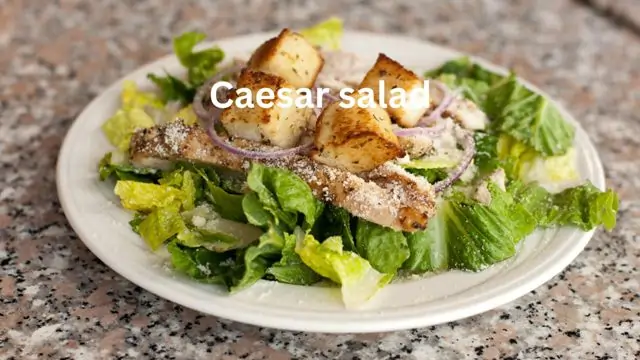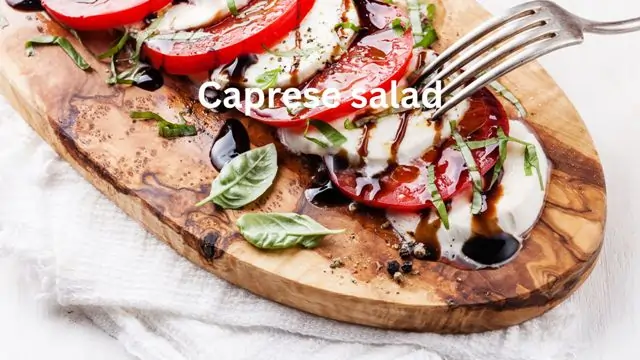Olive Garden Salad Dressing
Olive Garden salads are a signature dish of the Olive Garden restaurant chain. They are typically made with a blend of fresh greens, such as romaine lettuce and mixed greens, and often include toppings such as cherry tomatoes, red onions, and croutons. They can also be customized with protein options like grilled chicken, shrimp, or salmon, and come with a choice of salad dressings. Olive Garden salads are known for their fresh and flavorful ingredients, making them a popular and healthy menu option for diners.
Olive Garden is well known for its delicious and refreshing salads, which are a staple of their menu. While their salads are already delicious, there are ways to take them to the next level and impress your guests with a few simple tips. In this blog post, we’ll be sharing 5 easy and creative tips to elevate your Olive Garden salads and make them even more delicious. From selecting the right greens to incorporating colorful vegetables and creative toppings, these tips are sure to make your salads stand out and impress your guests at your next gathering. Let’s get started!
Olive Garden salads are popular because of their delicious blend of fresh greens and flavorful dressing. Their salads are known for their crisp, refreshing taste and ability to complement any meal. In addition, the salads are a healthy option and perfect for those who are looking for a lighter meal. The Olive Garden salad dressing, in particular, is a favorite among customers, with its signature blend of herbs and spices. Overall, Olive Garden salads are a fan favorite and perfect for any occasion.
Ingredients and Part of Salad
Salads are a versatile dish that can be made with a variety of ingredients and components. Some common ingredients in salads include:
- Greens: This can include lettuce, spinach, arugula, kale, or other leafy greens.
- Vegetables: This can include carrots, cucumbers, tomatoes, bell peppers, onions, or any other fresh vegetables.
- Fruits: Some salads include fresh fruit such as strawberries, apples, or oranges for added sweetness.
- Protein: This can include grilled chicken, shrimp, tofu, chickpeas, or other protein sources.
- Nuts and Seeds: Some salads are topped with nuts or seeds such as almonds, walnuts, or sunflower seeds for added crunch and texture.
- Dressing: A salad dressing can be made from a variety of ingredients including olive oil, vinegar, honey, mustard, or herbs.
A salad can be divided into four main parts:
- Base: This is the foundation of the salad and typically consists of greens or lettuce.
- Toppings: These are added to the salad to provide additional flavor and texture. Toppings can include vegetables, fruits, nuts, seeds, or protein.
- Dressing: This is added to the salad to provide flavor and moisture. Dressings can range from simple oil and vinegar to creamy dressings like ranch or Caesar.
- Garnish: This is an optional final touch that can be added to the salad to enhance its appearance. Garnishes can include fresh herbs, grated cheese, or croutons.
5 Tips to Impress Your Guests
Are you tired of serving the same old salads at your gatherings? Do you want to impress your guests with something new and exciting? Look no further than Olive Garden salads! In this blog post, we’ll share 5 tips to elevate and impress with Olive Garden salads. These tips are easy to follow and will take your salads from ordinary to extraordinary. With a few simple additions and creative twists, you can make your salads stand out and impress your guests at your next gathering. Let’s get started!
Tip 1: Choose the Right Greens
Importance of choosing the right type of greens
Choosing the right greens is essential to create a flavorful and visually appealing salad. Different greens offer varying textures, flavors, and nutritional benefits. Some greens are more bitter, while others are more delicate and sweet. Therefore, it’s important to choose the right type of greens based on personal preference and the other ingredients you plan to add to the salad.
Recommendations for which greens work best
Some of the best greens to use for an Olive Garden salad are romaine lettuce, arugula, spinach, and mixed greens. Romaine lettuce is crisp and sturdy, making it a great choice for the base of your salad. Arugula has a peppery taste and adds a nice kick of flavor to the salad. Spinach is delicate and sweet, while mixed greens offer a variety of flavors and textures.
Salad dressing pairings
Choosing the right salad dressing to pair with your greens is just as important as choosing the greens themselves. Olive Garden’s signature salad dressing is a blend of herbs and spices that pairs well with a variety of greens. However, you
Tip 2: Add Protein
Benefits of adding protein
Adding protein to your salad is an easy way to make it more filling and satisfying. Protein helps to keep you feeling full for longer and provides essential nutrients for your body. In addition, adding protein to your salad can enhance the flavor profile and make it more delicious.
Protein options to add to your salad
There are many protein options to choose from when it comes to adding protein to your Olive Garden salad. Grilled chicken is a popular choice, but you can also try shrimp, salmon, or tofu for a vegetarian option. Other options include hard-boiled eggs, chickpeas, or black beans. Be creative and choose a protein that complements the other ingredients in your salad.
How to prepare the protein
Preparing the protein for your salad is important to ensure it is cooked to perfection and adds flavor to your salad. For grilled chicken or shrimp, marinating it beforehand in herbs and spices can enhance the flavor profile. For tofu, try pan-frying it in a little bit of oil and seasoning with salt and pepper. For salmon, you can bake it with a honey mustard glaze for added sweetness. Hard-boiled eggs can be boiled beforehand and sliced for easy preparation. Chickpeas and black beans can be rinsed and drained from a can for quick and easy protein options.
Tip 3: Incorporate Colorful Vegetables
Incorporating colorful vegetables
Incorporating colorful vegetables into your Olive Garden salad not only adds visual appeal but also provides essential vitamins and nutrients for your body. Different vegetables offer varying colors and flavors, making the salad more interesting and exciting to eat.
Recommendations for which vegetables to add
Some colorful vegetables to add to your Olive Garden salad include cherry tomatoes, sliced cucumbers, shredded carrots, bell peppers, and red onions. You can also add some roasted vegetables like beets or sweet potatoes for a heartier option.
Ways to prepare and arrange the vegetables
Preparing the vegetables for your salad is important to ensure they are fresh and flavorful. For cherry tomatoes and cucumbers, slicing them thinly can add visual appeal and make them easier to eat. Shredded carrots can be added raw or roasted for added texture. Bell peppers and red onions can be roasted or grilled for added flavor. To arrange the vegetables in your salad, try placing them in separate sections to create a visually appealing rainbow effect. Alternatively, you can mix them all together for a more rustic look.
Tip 4: Get Creative with Toppings
How toppings can take your salad to the next level
Toppings can add an extra layer of flavor and texture to your Olive Garden salad, taking it to the next level. Adding toppings can also help to customize the salad to your personal taste preferences.
Recommendations for creative toppings
Some creative toppings to add to your Olive Garden salad include nuts like sliced almonds or chopped walnuts, dried cranberries or cherries, croutons, sliced avocado, or even sliced apples. You can also add some cheese like feta or parmesan for added creaminess.
How to prepare and arrange the toppings
Preparing the toppings for your salad is important to ensure they add the right flavor and texture. For nuts, toasting them beforehand can enhance the flavor profile. Dried fruit can be chopped into smaller pieces for easy eating. For avocado, slicing it thinly can make it easier to arrange on top of the salad. Croutons can be bought pre-made or you can make your own by toasting some bread with olive oil and seasoning. To arrange the toppings, try placing them on top of the salad in separate sections for added visual appeal. Alternatively, you can mix them all together for a more rustic look.
Tip 5: Dress It Up
Importance of selecting the right salad dressing
Selecting the right salad dressing can enhance the flavor of your Olive Garden salad and tie all the ingredients together. Different dressings offer varying levels of acidity and creaminess, which can affect the overall taste of the salad.
Recommendations for dressing pairings
For a classic Italian taste, try pairing your Olive Garden salad with a balsamic vinaigrette or Italian dressing. If you prefer something creamier, a Caesar or ranch dressing can work well. For a lighter option, try a lemon vinaigrette or honey mustard dressing.
How to prepare and serve the salad with dressing
When preparing your Olive Garden salad, it’s best to dress it lightly and toss it before serving. You can also serve the dressing on the side, allowing your guests to add as much or as little as they prefer. To ensure the salad doesn’t become soggy, serve the dressing in a separate container and allow guests to drizzle it over their individual servings.
What’s the most popular salad?
The most popular salad can vary depending on the region and personal preferences. However, some of the most popular salads around the world include Caesar salad, Greek salad, Cobb salad, Waldorf salad, and Caprese salad.
Caesar salad

Caesar salad is a popular salad that typically consists of romaine lettuce, croutons, Parmesan cheese, and a dressing made with garlic, anchovies, lemon juice, olive oil, Dijon mustard, and egg yolks. The salad is named after Caesar Cardini, an Italian-American restaurateur who is said to have created the dish in the 1920s in Tijuana, Mexico. The salad is often served as a side dish or as a main course with the addition of grilled chicken or shrimp. Some variations of the Caesar salad may include bacon, avocado, or cherry tomatoes.
Greek salad

Greek salad is a classic Mediterranean salad that typically includes chopped tomatoes, cucumbers, onions, and bell peppers, topped with feta cheese, Kalamata olives, and a light dressing made with olive oil, lemon juice, and oregano. The salad may also include additional ingredients such as lettuce, radishes, and capers. Greek salad is known for its bright and fresh flavors and is often served as a side dish or appetizer, or as a main course with the addition of grilled chicken or lamb. It is a popular dish in Greek cuisine and is enjoyed around the world.
Cobb salad

Cobb salad is a hearty salad that typically includes chopped lettuce, tomatoes, avocado, bacon, hard-boiled eggs, chicken, and Roquefort cheese, topped with a vinaigrette dressing. The salad was created by Robert Cobb, the owner of the Brown Derby restaurant in Hollywood, California in the 1930s. It is said that he created the salad using leftovers from the restaurant’s kitchen, making it a popular dish among Hollywood celebrities of the time. Today, Cobb salad is enjoyed as a classic American dish and is often served as a main course due to its filling and satisfying ingredients.
Waldorf salad

Waldorf salad is a classic American salad that was first created by the maître d’hôtel of the Waldorf Astoria hotel in New York City in the late 19th century. The salad typically consists of diced apples, celery, and walnuts, mixed with mayonnaise and served on a bed of lettuce.
Over the years, variations of the original recipe have been created, with some including additional ingredients such as grapes, raisins, chicken, and even yogurt or sour cream instead of mayonnaise. The sweetness of the apples and the crunch of the celery and walnuts, combined with the creaminess of the dressing, make for a flavorful and refreshing salad that can be enjoyed as a side dish or light lunch.
Waldorf salad is known for its unique combination of ingredients and its versatility, as it can be adjusted to suit different dietary needs and preferences. It is a timeless classic that has stood the test of time and remains a popular salad choice to this day.
Caprese salad

Caprese salad, also known as Insalata Caprese, is a simple and elegant Italian salad that showcases the flavors of fresh tomatoes, mozzarella cheese, basil leaves, and extra-virgin olive oil. The salad originated in the region of Campania in Italy and is named after the island of Capri.
Traditionally, Caprese salad is composed of slices of ripe tomatoes, alternating with slices of fresh mozzarella cheese. The salad is then adorned with whole or torn basil leaves and drizzled with high-quality olive oil. It is often seasoned with salt and black pepper to enhance the flavors.
Caprese salad is loved for its vibrant colors, contrasting textures, and the combination of creamy mozzarella, juicy tomatoes, and fragrant basil. It is a light and refreshing dish that is typically served as an appetizer or a side dish during the summer months when tomatoes are at their peak. The simplicity of Caprese salad allows the quality of the ingredients to shine, making it a favorite among Italian cuisine enthusiasts.
Blog Post Conclusion On Olive Garden Salads
In conclusion, Olive Garden salads are a popular and delicious dish that can be easily elevated to impress your guests. By following the five tips outlined in this blog post, you can create a visually appealing and tasty salad that is sure to impress. From choosing the right greens to adding protein, incorporating colorful vegetables, getting creative with toppings, and dressing it up with the right salad dressing, these tips can help you create a salad that is not only delicious but also visually appealing.
So why not try out these tips and create a salad that will be the star of your next dinner party or family gathering? With a little creativity and these tips, you can make an Olive Garden salad that your guests will remember and enjoy.
FAQ and answers on Olive Garden Salads
What type of greens are in Olive Garden salads?
Olive Garden salads typically include romaine lettuce, mixed greens, and sometimes spinach.
What types of proteins can I add to my Olive Garden salad?
You can add grilled chicken, shrimp, or salmon to your Olive Garden salad, or opt for vegetarian protein options like tofu or chickpeas.
Can I customize my Olive Garden salad to my dietary needs?
Yes, you can customize your Olive Garden salad to your dietary needs by omitting ingredients or requesting substitutions from your server.
What types of salad dressing do Olive Garden salads come with?
Olive Garden salads typically come with a choice of salad dressings, including Italian, Caesar, balsamic vinaigrette, and ranch.
